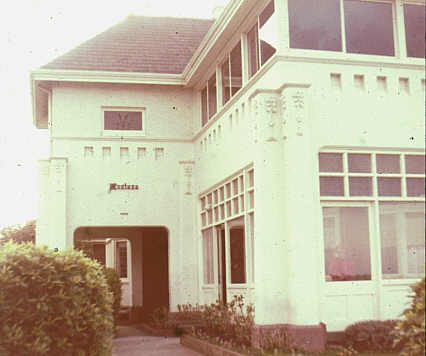
Back to Main Encylopaedia Contents
Hearne Residence, Geelong

The organ chamber is behind the "Montana" name over the archway
Successful businessman Oswald Hearne (of Hearne's Bronchitis Cure) built a magnificent house named "Montana" in Geelong in 1911. He had a love of music, and in November, 1927, visited the residence of William Crowle in Elizabeth Bay, Sydney. Mr Crowle, was Wurlitzer's Australian agent, and had in his home a two-manual, seven-rank instrument, which he used as a demonstration organ, and which was also used by some American organists for practice before they opened new Wurlitzer organs.
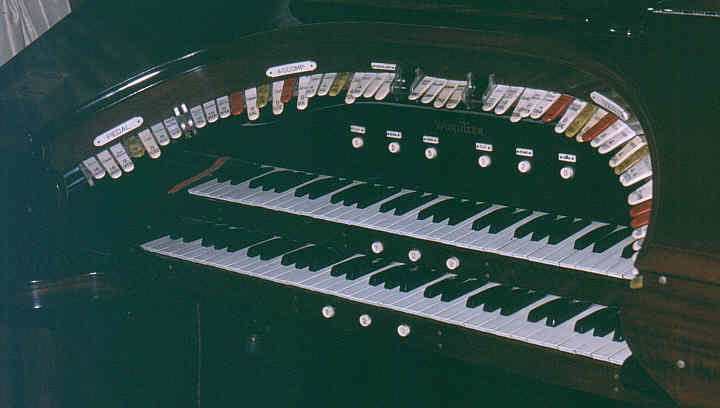
The organ was for many years thought to have been Opus 129, the first Wurlitzer to leave the North American continent, that was shipped to Australia on 1 June, 1917.
However, it has now been established that it dates from 1921, and is Opus 388.
Its seven ranks were originally: Open Diapason, Oboe Horn, Salicional, Viol CÚleste, Flute, Vox Humana and Dulciana. It also contained Cathedral Chimes, Chrysoglott, Xylophone and Orchestral Bells. The organ was controlled from a standard two-manual panel-style console, but was also fitted with a separate console, which resembles an upright piano with no keyboard, housing twin roll-playing mechanisms and a double set of stopkeys.
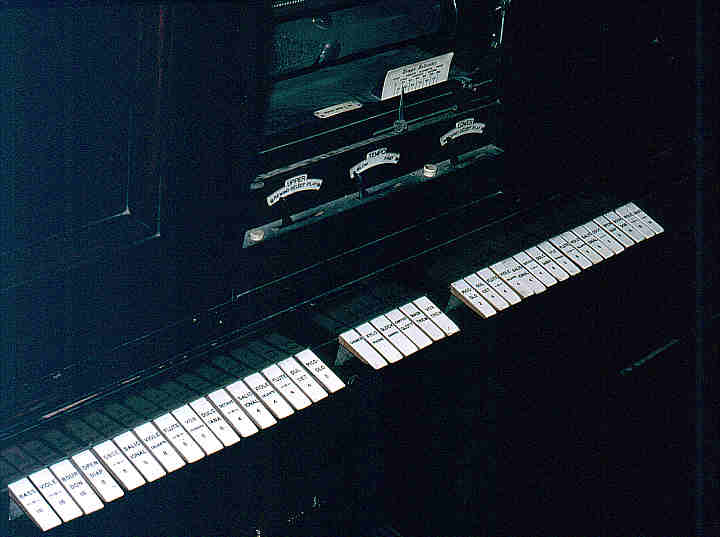
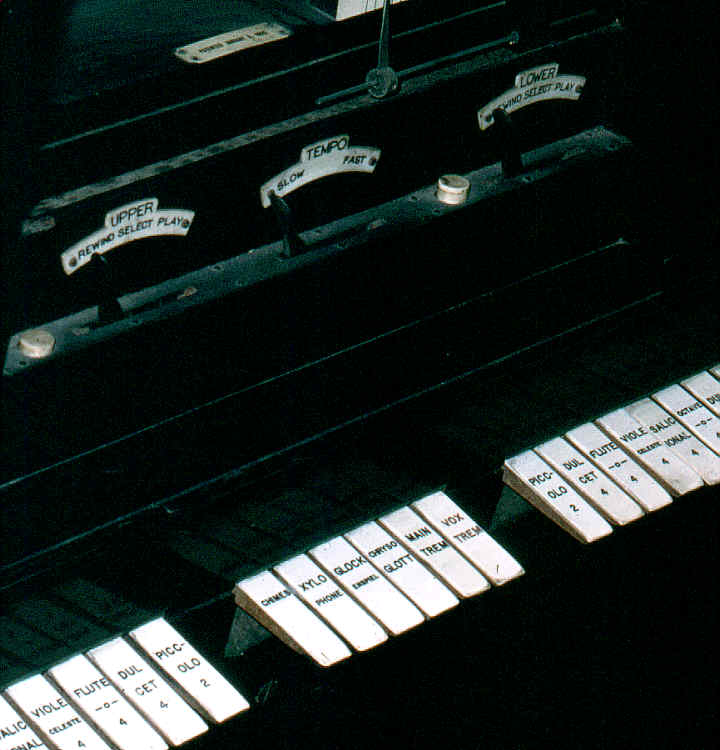
Stopkeys and controls of the roll-player console
Mr Hearne was most taken with the organ's sound, and eventually persuaded Mr Crowle to sell it to him. He returned to Geelong to build a special annexe to his house to accommodate it. The chamber opened onto a landing on the stairs, and the console could be placed under the stairs in the main entry.
"The chamber had been completed for some time awaiting it, and I was recently reading a letter from Mr Hearne to his sister in Sydney asking her to call Crowle without delay; and her reply to the effect that Mr Dodd [responsible for installing Wurlitzer's organs] intended getting on with it as soon as he had finished installing the 3/15 Wurlitzer in the Capitol Theatre, Sydney. When the organ did arrive in Geelong, Dodd and his assistant [Mr Smith] stayed in the house for the four weeks of installation." [Glover, Alan (Son-in-law of Ossie Hearne), correspondence, 1 July, 1979]
The organ's arrival at Geelong was reported in the local press:
"WURLITZER ORGAN ARRIVES
Nine large packing cases which were unloaded from the 'Edina' yesterday created considerable interest at the Moorabool Street wharf. The cases contained the parts of the electro-pneumatic Wurlitzer pipe organ purchased by Mr O C Hearne, which is to be installed in a specially-built organ chamber at his residence at Drumcondra. The organ was the first of the electro-pneumatic type to be erected in a private house in Australia.
In addition to the pipework, the organ has a group of four individual tones, including the chrysoglott, xylophone, glockenspiel and chimes. A five horse-power motor will drive a 10-volt generator which, in turn, operates the organ. The console, which has all controls and pedals incorporated, will, when erected. be detached from the organ itself, the only connection being an electric cable. A swell control is a feature of the instrument, and by its use a mere whisper of sound increases in a gradual crescendo. A particularly notable feature is the provision of a separate player unit, which makes possible the playing of any standard piano roll on the organ.
Experts arrived in Geelong on Thursday evening, and will be engaged for the next month in the assembling and installation of the organ. [Geelong Advertiser, 1928 (typed copy supplied by Alan Glover)]
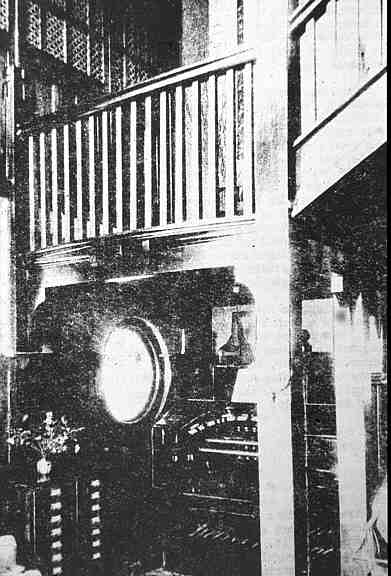
The organ in 1928. The chamber grilles can be seen opening onto the landing above the console
The installation work was completed in April, 1928. The organ has been broadcast over the ABC on several occasions, the first of these being in 1930, played by Rev. Church (the first residence organ to be broadcast in Australia). In 1940, as a wartime fundraiser, a concert was held, with admission at two guineas, all proceeds going to the Red Cross. [Gliddon, Robert, notes, 1984]
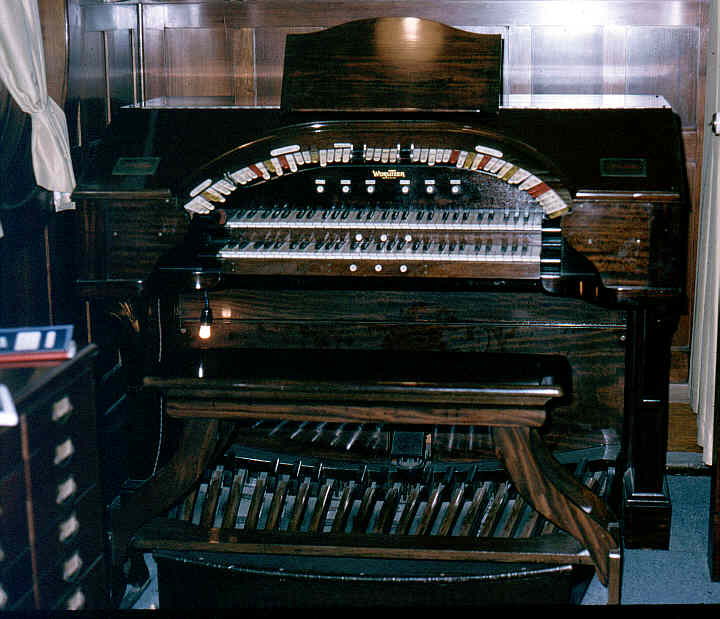
In the 1967, a seven-inch 33 1/3 r.p.m. record of the instrument, entitled A Cool Verandah, was issued, featuring items recorded by Stanfield Holliday in 1964. [Pagoda Records PX701 - also contains tracks by Stanfield Holliday recorded in 1965 at the Regent Theatre, Adelaide]
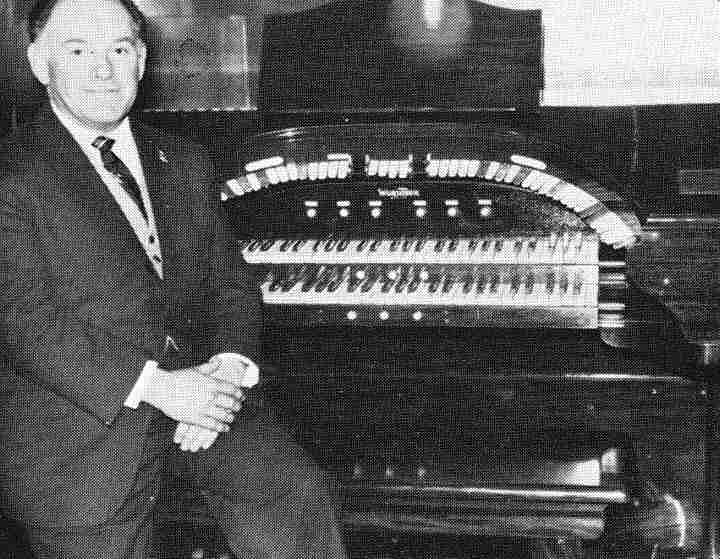
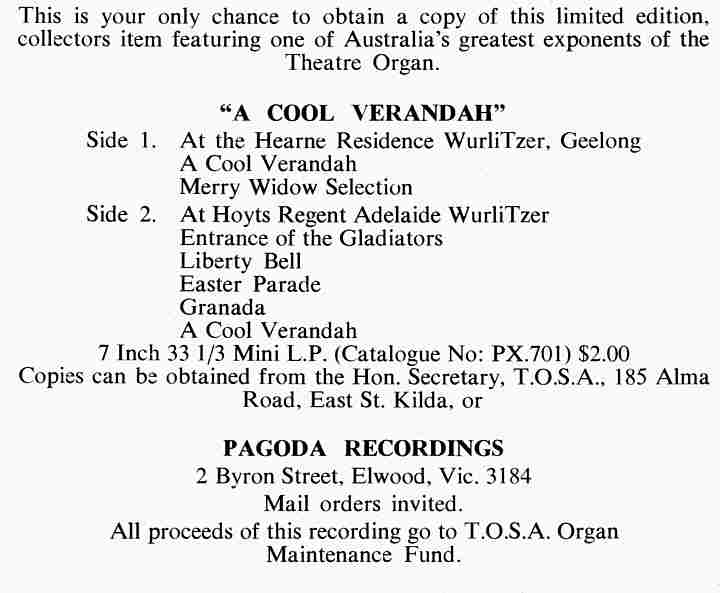
Mr Hearne died in 1951, and Mrs Hearne looked after the house and organ, which was well maintained, until she died at the age of 91 in 1977. The house and organ the passed to his his daughter and Alan Glover, his son-in-law, who is an accomplished organist.
I was privileged to visit this instrument in 1975, and found it one of the most charming small Wurlitzers it has been my joy to play. It has a rich, yet delicate, sound, ideally suited to its location, with exquisite softer stops. All is in balance, with a delightfully smooth Oboe Horn to cap the ensemble.
At the right-hand end of the stoprail are some dummy stops. These were a source of mystery. It was not possible to fathom out why they were there. Later correspondence with Alan Glover produced some information, but their purpose still remains a mystery. The tabs do not depress, but the Oboe Horn tab (the first tab around) and a dummy Tibia 8 tab in the main grouping are fitted with combination piston motors. Apart from the Tibia, all the tabs duplicate ones in the main grouping. There are contact wires for each stop, and holes drilled for combination piston motors for those which do not have them. There is no provision on the relays for any further stops. Alan Glover suggested that they might have been for traps or percussions which Mr Hearne did not want, or that they may have been fitted for cosmetic purposes. [Glover, Alan, correspondence, 2 February, 1980]
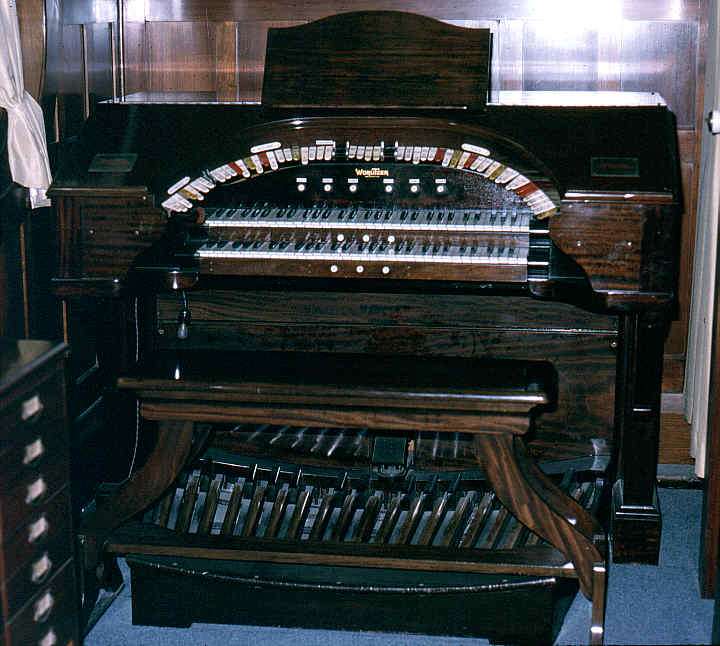
There have been some changes to the organ since 1917. . The treble pipes of the Flute were replaced with stopped wooden pipes while the organ was at Geelong. The roll-player unit was disconnected for many years, but was brought back into use in 1984. [TOSA News, TOSA (NSW), June, 1984, p. 21] More recently, a Tibia Clausa rank was added, bringing its rank total to eight.
The organ was removed to safe storage in Melbourne in September, 2001, as the house was to be sold. It is currently being renovated pending reinstallation.